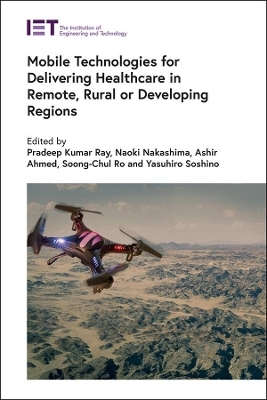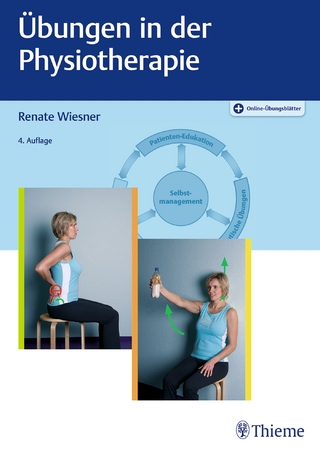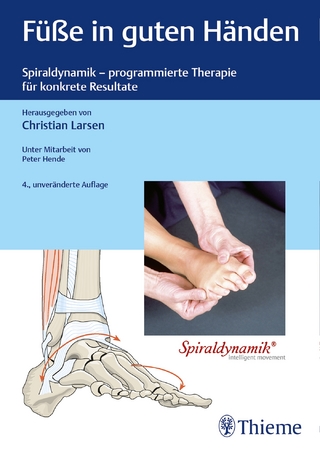
Mobile Technologies for Delivering Healthcare in Remote, Rural or Developing Regions
Institution of Engineering and Technology (Verlag)
978-1-83953-047-0 (ISBN)
This edited book explores the use of mobile technologies such as phones, drones, robots, apps, and wearable monitoring devices for improving access to healthcare for socially disadvantaged populations in remote, rural or developing regions. This book brings together examples of large scale, international projects from developing regions of China and Belt and Road countries from researchers in Australia, Bangladesh, Denmark, Norway, Japan, Spain, Thailand and China. The chapters discuss the challenges presented to those seeking to deploy emerging mobile technologies (e.g., smartphones, IoT, drones, robots etc.) for healthcare (mHealth) in developing countries and discuss the solutions undertaken in these case study projects.
This book brings together joint work in mHealth projects across multiple disciplines (software, healthcare, mobile communications, entrepreneurship and business and social development). Bringing together research from different institutions and disciplines, the editors illustrate the technical and entrepreneurial aspects of using mobile technologies for healthcare development in remote regions. Chapters are grouped into five key themes: the global challenge, portable health clinics, sustainable and resilient mHealth services, mHealth for the elderly, and mHealth for chronic illnesses.
The book will be of particular interest to engineers, entrepreneurs, NGOs and researchers working in healthcare in sustainable development settings.
Pradeep Kumar Ray is the Director of the Centre for Entrepreneurship, University of Michigan-Shanghai Jiao Tong University Joint Institute, China, and currently leads the international initiative mHealth for Belt and Road region (mHBR) involving more than ten countries. Pradeep works on a range of innovative projects on eHealth and mHealth (jointly with industry, governments and global bodies like WHO, EU and IEEE) in eHealth and mHealth across the Asia Pacific region. He founded the WHO Collaborating Centre for eHealth in UNSW-Australia. He also co-founded IEEE Healthcom, premier international event held annually since 1999. Naoki Nakashima is a professor and Director at the Medical Information Center of Kyushu University Hospital, and also a visiting professor of National Institute of Informatics, Japan. He is the leader for mHealth for Parkinsons Disease in mHBR. He is vice-president of the Japan Association for Medical Informatics (JAMI). He is also a founding member (2003) and past-vice director (2012) of the Telemedicine Development Center of Asia (TEMDEC) in Kyushu University. Ashir Ahmed is an associate professor at the department of advanced information technology in Kyushu University, Japan and director of Global Communication Centre (GCC) projects at Grameen Communications, Bangladesh. Ashir leads the Portable Health Clinic project in mHBR. His research aims to produce and promote ICT-based social services for remote communities in the world. Soong-Chul Ro is an associate professor and leader of the Bangladesh Challenge Project at the Centre for Entrepreneurship, University of Michigan-Shanghai Jiao Tong University Joint Institute (UM-SJTU JI), People's Republic of China. He also leads the Global Challenge project of mHBR. He has created and overseen several CSR projects, in partnership with NGOs and private companies. He is an honorary member of the Korean Diakonia Welfare Foundation. Yasuhiro Soshino is the director of the International Medical Relief at Japan Red Cross Kumamoto Hospital, Japan. He also leads the Drones project at mHBR. He works closely with governments and industry in reaching medical relief in disaster affected areas using drones and has extensive experience in leading Red Cross disaster relief missions following natural disasters. He has been working on a range of disaster relief technologies including photovoltaics, IoT and drones.
Section I: Global challenge
Chapter 1: Role of the university for sustainable development
Chapter 2: Be friends with the future - Global innovation and entrepreneurship collaboration system in the field of medical health
Chapter 3: Use of mobile health application to support belt and road initiatives: a cross-sectional study in China and Bangladesh
Chapter 4: Behind the popularity of 'online mutual aid': how does the Chinese one-child policy generation appraise and control cancer risk of their aging parents
Chapter 5: Understanding health professionals' perspective on delivering health information on social media: a case study in Bangladesh
Section II: Portable health clinic
Chapter 6: Mapping the need for preventive healthcare services in remote South Asian communities
Chapter 7: Portable health clinic: concept, design, implementation and challenges
Chapter 8: Modular expansion of PHC in Bangladesh
Chapter 9: PHC and case studies of remote healthcare services in Asian countries
Chapter 10: Personal health record in Japan, China, and Bangladesh
Chapter 11: Telemedical education in Asia
Section III: Sustainable and resilient mHealth services
Chapter 12: Generic disaster information model for message delivery triage in disaster response
Chapter 13: Application and development of drones for health services in developing countries
Chapter 14: Build back better in the drone application by the Nepal Flying Labs
Chapter 15: Sustainable and resilient community development by drones
Section IV: mHealth for the elderly
Chapter 16: Mitigating isolation and loneliness with technology through emotional care by social robots in remote
Chapter 17: Healthcare robots for elderly people: A review of the robotic solutions, use cases, and barriers
Chapter 18: The integration of robots and wearables
Chapter 19: The usability of smart speakers for seniors
Section V: mHealth for chronic illnesses
Chapter 20: The status of healthcare service delivery systems: comparison, mobile health, and healthcare service design
Chapter 21: What is going on in digital health communities? A typology of support exchanges for cancer patients
Chapter 22: Business and legal framework for the exchange of mHealth data for aged care across countries
Chapter 23: Applications of machine learning techniques in the diagnosis of Parkinson's disease: promises and challenges
Chapter 24: Assessment of vulnerability to natural disasters for emergency management in Victoria, Australia
Chapter 25: Conclusion and future work
| Erscheinungsdatum | 12.10.2020 |
|---|---|
| Reihe/Serie | Healthcare Technologies |
| Verlagsort | Stevenage |
| Sprache | englisch |
| Maße | 156 x 234 mm |
| Themenwelt | Medizin / Pharmazie ► Physiotherapie / Ergotherapie ► Orthopädie |
| Technik ► Medizintechnik | |
| Technik ► Nachrichtentechnik | |
| ISBN-10 | 1-83953-047-2 / 1839530472 |
| ISBN-13 | 978-1-83953-047-0 / 9781839530470 |
| Zustand | Neuware |
| Informationen gemäß Produktsicherheitsverordnung (GPSR) | |
| Haben Sie eine Frage zum Produkt? |
aus dem Bereich


